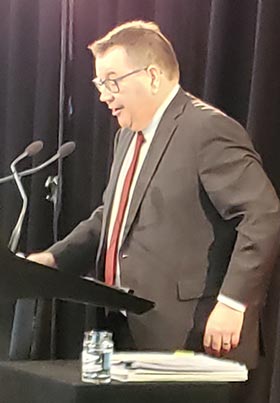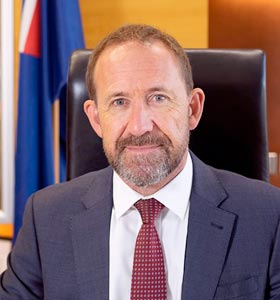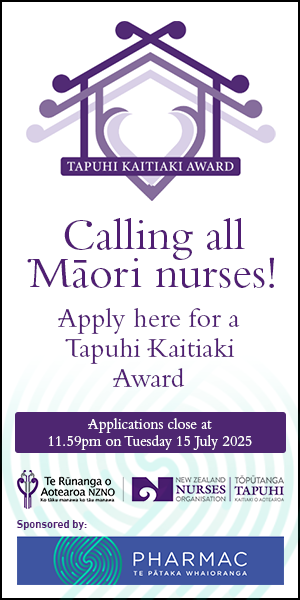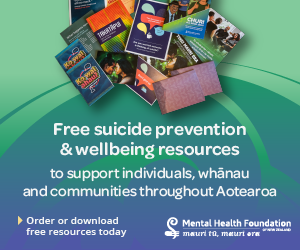
Launched in the curving, second-floor auditorium of the Beehive, Budget 2021 was announced far from the wards and clinics and theatres – and hopes – of the health world.
There was, nevertheless, a brisk play by this second-term Government to appear to be wanting to support health and, in particular, Māori health.
Firstly, the Budget launched Government spending on its ambitious health reforms. It tagged $486 million to kick-start its planned health system revamp.

This included $98 million to set up its proposed Māori health authority (MHA), and $127 million for Hauora Māori programmes – run by the MHA – including money for boosting “provider capability, and a Māori health innovation fund”.
Finance Minister Grant Robertson was at pains to point out the money was only the beginning of funding for the MHA.
“Just to be clear… that is just the initial set-up and transition costs. It is not the costs, or the amount of money we’re going to invest in Māori health over the next few years. This is to establish a Māori health authority, begin its commissioning work – but there will be more resources as we develop…”
Overall, the Government would spend an additional $4.7 billion on health, he said. This included an extra $200 million for PHARMAC and an additional $2.7 billion for district health boards (DHBs), over the next four years.
There would also be $700 million infrastructure cash for DHBs to invest in new assets over four years.

Health Minister Andrew Little said the Budget increased funding for primary health care by $46.7 million annually.
He said the funding would double the number of adults receiving cochlear implants, an increase that means 320 more people would get implants by 2025.
The $486 million set aside for the health reforms would run over four years, to replace the 20 DHBs with a single agency, Health NZ, create local networks and establish the MHA.
The changes will be rolled out over the next three years, with supporting legislation expected to be in place by this time next year.
Meanwhile the Government allocated $1.5 billion for the COVID-19 vaccine and immunisation programme. Robertson said about $1 billion of that was for advance-purchase agreements for vaccines, and $357 million for the immunisation programme.
“We are also continuing to invest in our managed isolation, quarantine and other border facilities. We still have $5.1 billion available in the COVID Response and Recovery Fund.”
Housing and health
Asked why Whânau Ora had not received additional funding in the new Budget, Associate Health Minister (Māori Health) Peeni Henare said housing and health were the main issues being flagged by Māori communities – therefore funding was prioritised in those areas.
NZNO senior policy analyst Lucia Bercinskas said there was no indication if any of the new funding was targeted at health worker salaries.
Bercinskas said a proposed social unemployment insurance scheme, paying out people left unemployed by the likes of COVID-19, was simply reactive.
“Again that is almost like the ambulance at the bottom of the cliff – but there was no incentive for people to keep their jobs in the health sector.” She asked who would pay for it.
While there was additional money for PHARMAC, it was not as much as had been requested, Bercinskas said. This meant there would still need to be rationing, to get first world drugs and devices.
Similar questions remained about the extra cash for DHBs, she said: would it be used for actual investment, or just to pay off national debt?
However, Bercinskas said the Budget did take a more holistic approach to working on the social determinants of health, like child poverty, housing, and Māori housing.
The Budget would raise weekly benefits by between $32 and $55 per adult. Student living support would increase by $25 a week from April 1 next year.
Other health spending included:
- $516 million to develop and run effective health infrastructure, including a national health information platform, so health records can be read and approved by health professionals anywhere in the country.
- $399 million to support people with long-term physical, intellectual or sensory impairment.
- $100 million to improve air and road ambulance services.
- $16 million for Pacific health providers to implement the Ola Manuia Action Plan.
Brown Budget?
Māori face some of the biggest health inequities in Aotearoa – including lower on-average life expectancy and higher mortality rates for multiple diseases.
These inequities are the unavoidable result of Māori doing it tougher in all areas of society.
With a 15-strong Labour Māori caucus, five Māori Cabinet ministers, plus potential “by-Māori, for-Māori” changes in the works, there was anticipation that Budget 2021 could fuel a genuine handover of power to Māori.
Massey University associate professor Matt Roskruge (Te Atiawa, Ngāti Tama) said, pre-Budget, there had been “encouraging signals” – even a genuine belief among ministers – that the Budget would be transformational.
In the end it felt like a positive “but slightly underwhelming spend”, with a large portion going into scoping and planning for “next steps”.
Roskruge said from a health perspective “we know our health infrastructure, workforce and system are all in serious trouble”. The Budget, he said, was an attempt to deal with these systemic issues through reforms. But it was still very much in “seeding and scoping stage”.
The next Budget or two would be the ones to watch for a steer on whether this was more neoliberalism – contracting out health services – or a genuine attempt to reform the public health service.
‘…the eye always needs to be on health outcomes and not bureaucratic processes or expensive contracts, consultancies.’
Meanwhile the additional $200 million for PHARMAC was a let-down. It was “well below” what most were hoping to see. Some were asking for a $400 million a year increase, not $50 million per year for four years, Roskruge said.
For Māori, the health authority funding was “a bit of a black box” (ie, its internal workings were unclear). A lot of money was set aside for consultation, which was a positive, he said. However it was also put aside for consultancy, which was a “bit worrying”.
“I think it’s encouraging that there is a lot of scope for Māori to help shape this authority and its mandate to deliver on Māori health priorities, but the eye always needs to be on health outcomes and not bureaucratic processes or expensive contracts, consultancies.”
Victoria University economist Peter Fraser (Ngāti Hauiti ki Rangītikei, Ngāti Toa, Ngāti Raukawa, Ngāti Kahungunu, and Ngāpuhi) said the amount of money for the reforms seemed good, but, he asked, compared to what?
If National were the Government, then it was “probably pretty good”. But, he said, this was a Labour Government with an overwhelming majority, and “a huge Māori caucus”.
“Compared to what’s been in the past, it’s actually pretty bloody good, but it’s still pretty bloody underwhelming.”
Fraser, himself involved in health reform policy in the ’90s, took a historical perspective – questioning the willingness of the Government to act while it had the chance.
“Imagine if Norman Kirk [a reforming Labour Prime Minister from 1972] was Prime Minister now. What would he be doing? He wouldn’t be p*****g around.”
Similarly, the first Labour Government (in 1935) went out and got things done, Fraser said.



